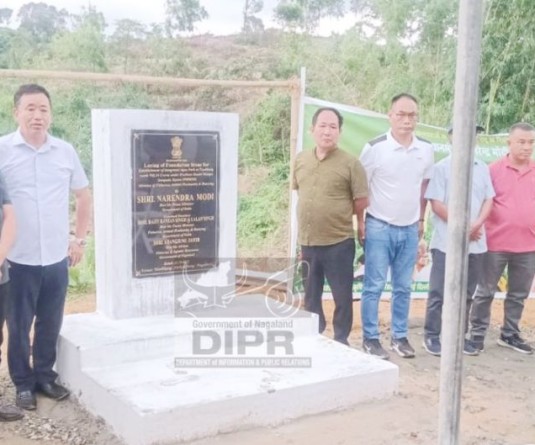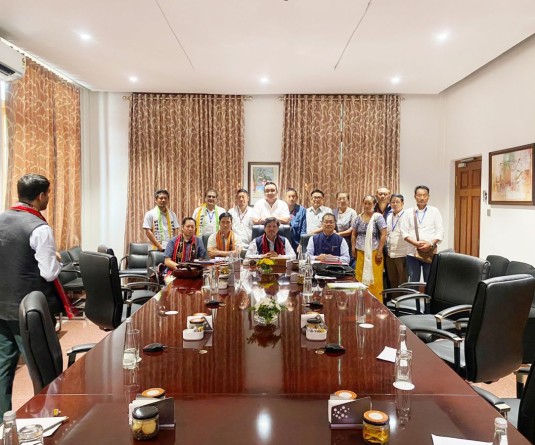
Dimapur, December 2 (MExN): The Naga Scholars’ Association (NSA) organized its November-monthly talk on the topic, ‘Interrogating cultural (mis)appropriation in the context of the Nagas’ on November 27.
The NSA in a press release stated that the speakers were Dr Nesatalu Hiese, Senior Scientist at Nagaland Science & Technology Council under the Department of Science & Technology, and person-in-charge of Patent Information Centre of the state; Sophy Lasuh, a filmmaker and research scholar from Nagaland.
Dr Avitoli G Zhimo, Associate Professor, Department of Anthropology, University of Delhi, chaired the session. In Naga culture, Dr Zhimo remarked, “Indigenous knowledge is the collective property of the community,” the consideration of the consent of the members is emphasized when the knowledge is disseminated to outsiders.
The recent wrangling in Nagaland between certain developmental bodies and the tribal organizations corroborates the apprehension that the cultural heritage of the Nagas is in a state of extreme vulnerability from infringement. This unfortunate fiasco invariably points to the urgency of engaging in ethical inquiries on how an insider has represented one’s culture to the non-Nagas, or where and how did the latter acquire the indigenous knowledge, she said.
Lasuh viewed that the recurrent phenomenon of cultural appropriation was due to the lack of understanding, the unwillingness of the dominant culture to study and learn the culture of the minority community.
As someone invested in ethnographic film, traditional practice of weaving, and documentation of the nettle textile history of the Chakhesang community, Lasuh shared about the levels of appropriations occurring singularly or simultaneously in the Chakhesang context; object appropriation, content appropriation and even subject appropriation are identified, giving evidence to the misuse of the tribal style and motif. Corollary to the acts of appropriation, as she noted, “involves taking, existence of power imbalance, absence of consent and presence of profit”.
Dr Hiese deliberated on critical questions such as: can a culture claim ownership over a work of art in the absence of an authenticated will or document? What are the legal provisions to claim ownership of one’s cultural intellectual property? The discussion included decoding the Indian legal system that addresses the protection of indigenous cultural heritage under Intellectual Property Right (IPR) and Geographical Indication (GI).
Considering the challenges in formulating who owns what and how to (re)claim it through legal provision, emphasis was made on the significance of IPR and GI and its offshoots: Patents, Trademarks, Copyrights, etc, and their legal framework in safeguarding cultural works. In tandem with the customary laws, a close understanding of other legal protection was specified, as in the context of Nagaland state, “Article 371(A) and Customary Laws are not enough to protect our heritage because of its lack of legal binding.”
Citing the Chakhesang community who got their GI registration in 2017 and is the first in Nagaland, the urgent need for the other Naga tribes to secure the GI was strongly recommended.
Dr Hiese concluded by stating that “When there is a cultural appropriation, with or without GI, the community has every right to fight for whatever belongs to them”.





